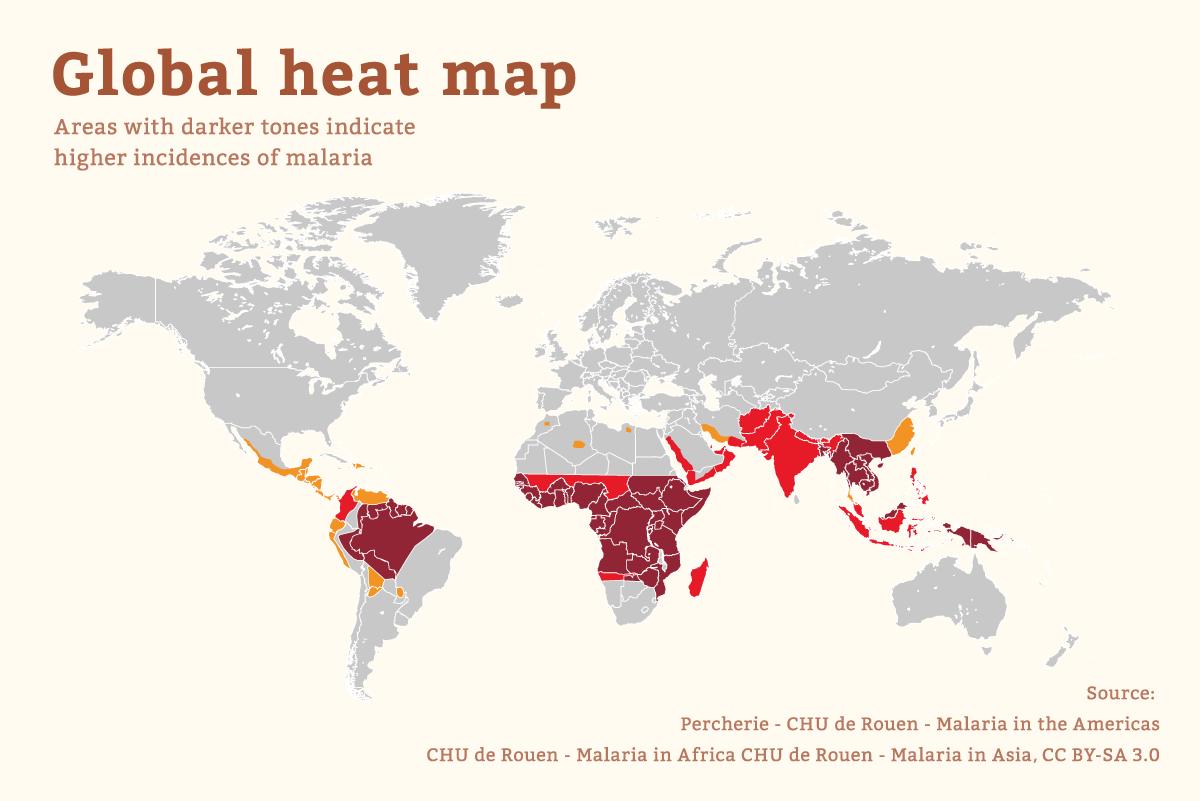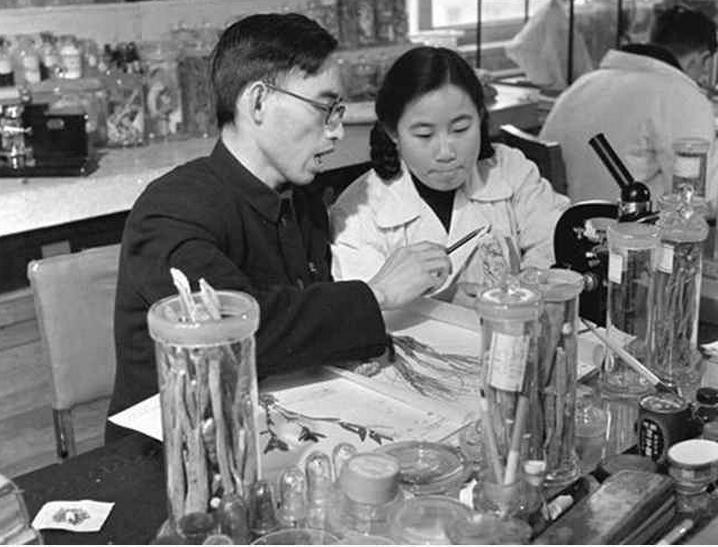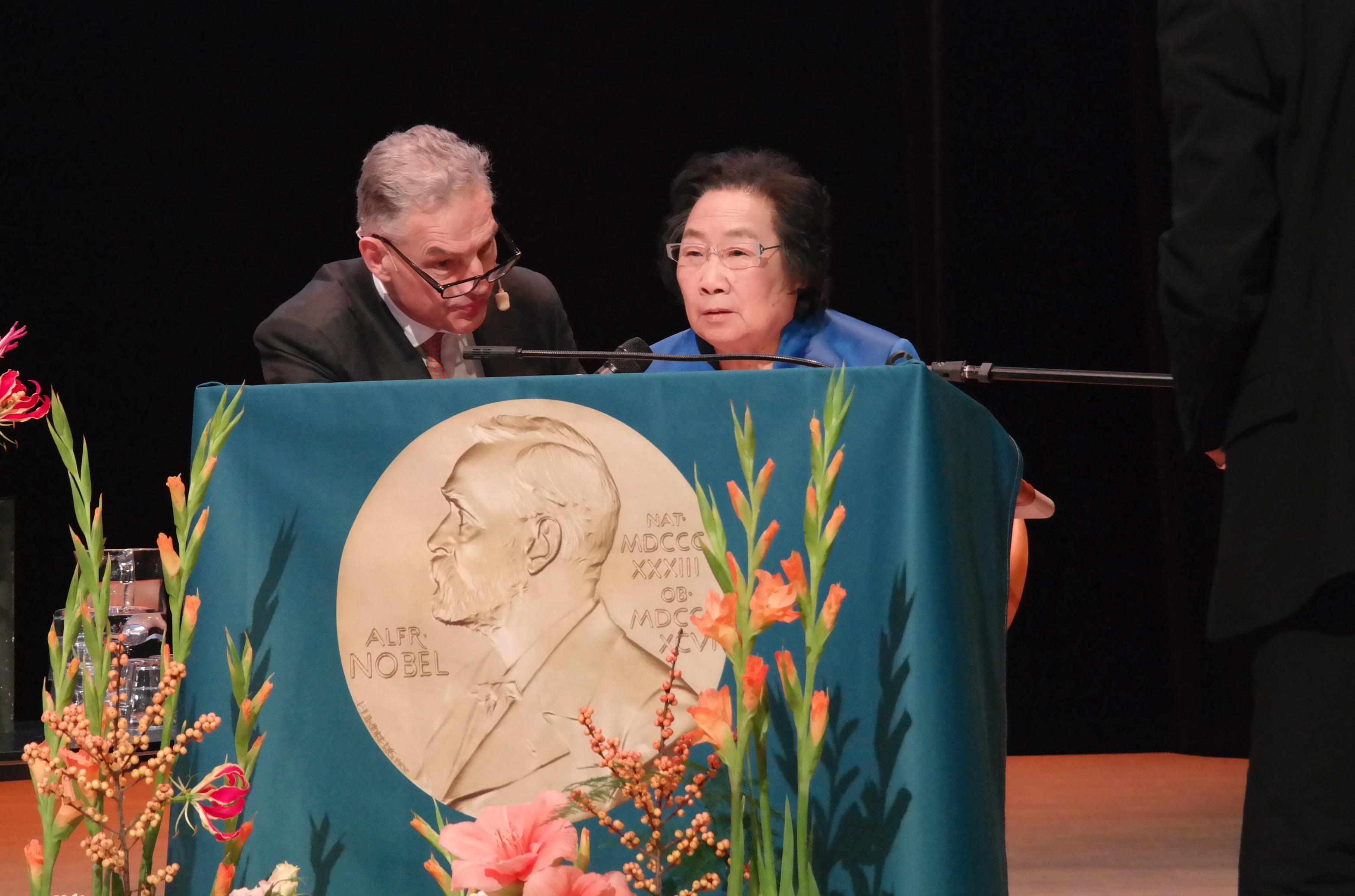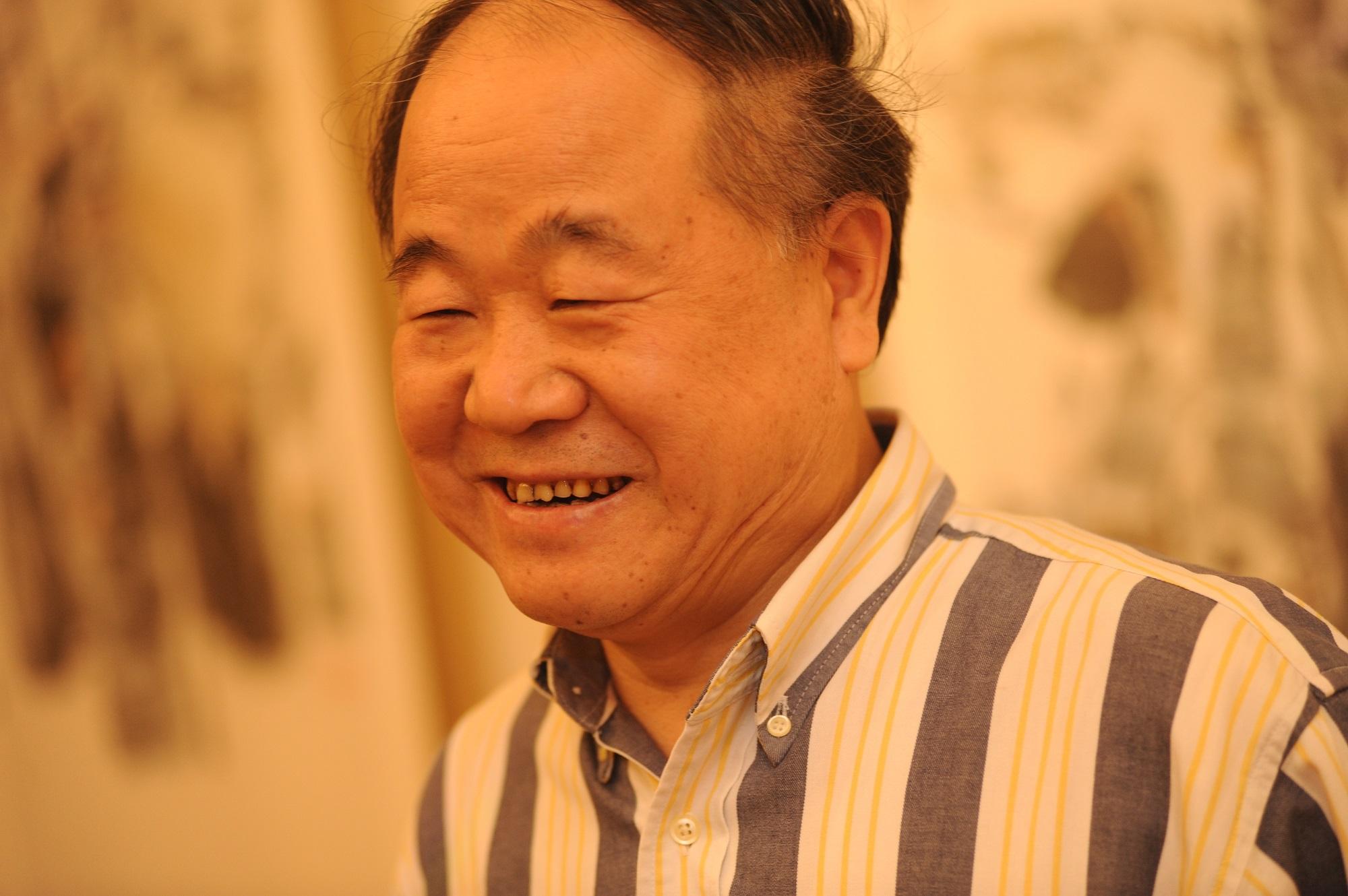We may think of malaria as an illness rarely seen in China, but its dramatic decline has only been realized in the past few decades. Much of this is thanks to the research into artemisinin by Tu Youyou (屠呦呦), winner of the 2015 Nobel Prize in Physiology or Medicine, and Chinese medical scientist.
Discovered amidst a background of hardship and trying conditions, artemisinin (or Qinghaosu 青蒿素, its original name) was successfully synthesized by a team led by Tu during the Vietnam War period. To date, the drug has saved the lives of tens of millions of people and played a crucial role in the global fight against malaria. The mortality rate has halved over the past decade.
On March 24, 2017, Bill Gates, American philanthropist and founder of Microsoft, said in a speech at Peking University: "With China’s leadership, we stand a chance to make malaria the third human disease - after smallpox and, soon, polio - to be wiped off the face of the earth."
But why under China’s leadership? There’s more to Gates’ statement than mere guest speaker pleasantries.
Until half a century ago, malaria was highly prevalent across the world. In China’s rural south, malaria was still a common disease 20 or 30 years ago. Today, the majority of malaria cases in China are imported and so most of our understanding of the disease comes from Africa.
The spread of malaria has been significantly contained in this short period thanks in large part to Tu’s research, making it a great achievement and a part of Chinese history.
Origins
Malaria was recorded in the early histories of China and many other countries, but it was not until 1820 that the first drug used to treat the disease, quinine, made its appearance. An extract from the bark of the Cinchona plant, this drug remained the primary means of treatment for more than a century.
But in the 1950s, quinine resistant malaria was discovered in Southeast Asia and South America and in the 1960s, more than 200 million patients in more than 100 countries were left without effective treatment leading to a sharp increase in malaria-related mortality. The epidemic in Southeast Asia was uncontrollable and killing more people than those died in the Vietnam War. Statistics have shown that during the Vietnam War, the American military lost up to four to five times more soldiers from malaria than to combat; in 1965, the incidence of malaria in the U.S. military was as high as 50%.
In response, the United States established a special council involving dozens of departments with the aim of increasing funding for research and combating malaria. By 1972, the Walter Reed Army Institute of Research had screened 214,000 compounds, but had not found a suitable anti-malarial drug.
Elsewhere, the Hanoi Health Bureau found through a comparison of sick and wounded patients from 1961 to 1968 that there were far more sick patients than injured patients at all periods except the first quarter of 1968 and that most of the sick patients were infected with malaria. In light of this, Vietnamese leaders sought assistance from China, which had also been experiencing its own series of malaria outbreaks with over a million people infected.
Work to Be Done
In order to save her people, the Chinese government set out to develop new antimalarial drugs by forming a number of research groups with Tu Youyou being one of the medical scientists involved.
She grew up at the Yao family household of her maternal grandmother in Ningbo and is the niece of eminent economist and banker, Yao Qingsan (姚慶三). A graduate of the Peking University School of Medicine’s Department of Pharmacy, she majored in biopharmaceuticals (natural medicine). Due to her comprehensive knowledge of both Chinese and Western medicine and recognized scientific research ability, she was appointed leader of the research team at the China Academy of Traditional Chinese Medicine in 1969 at the comparatively young age of 39.
Although she was named head of the group, in many ways, she was a group unto herself. Working alone, she visited senior Chinese medicine practitioners and consulted ancient texts, accumulating over 2,000 prescription recipes in three months. She collected these into a mimeographed pamphlet, A Collection of Single Practical Prescriptions for Anti-Malaria (抗瘧集). It contained more than 640 kinds of traditional Chinese medicines, including Artemisia annua (青蒿).
The group expanded to include three members, beginning with research into herbal medicine. Together, they screened extracted samples from over 100 kinds of Chinese medicines - unfortunately to no avail.
Tu persisted and ordered everyone back to the ancient texts until one day when the unassuming Artemisia annua, a plant from the same family as the sunflower, caught the group’s attention.
Artemisia annua, also known as sweet wormwood, is a very common plant in northern and southern China and had been used in China for more than 2,000 years. The treatment of malaria using Artemisia annua was detailed in the Handbook of Prescriptions for Emergency Treatments (肘後備急方) by Ge Hong (葛洪) during the Eastern Jin Dynasty. Later records in the Song, Yuan and Ming dynasties described the drug in potion, pill and powder form. There was also a record describing the treatment of malaria in the Bencao Gangmu (The Compendium of Materia Medica,本草綱目).
Although many Chinese medicine practitioners at that time were familiar with the idea of using the plant to treat malaria, they did not have access to the scientific methods Tu utilized to synthesize a standard, replicable, reliable treatment.
Tu’s working conditions at the time were spartan, equipment was simple and the team lacked the necessary ventilation system and protections, such that Tu contracted toxipathic hepatitis while extracting the needed compound. Her husband, Li Tingzhao (李廷釗), recalls that during that period, his wife would cloister herself in the lab with only artemisinin on her mind.
Later inspired by a re-reading of Ge Hong’s Handbook, Tu and her colleagues changed the method of extracting the drug, carrying out a series of complex and tedious screening procedures. After 190 failures, they experienced a breakthrough on the 191st attempt.
On October 4, 1971, Tu was successful in extracting an effective compound from Artemisia annua using low-temperature ether (instead of boiling water, which was found to damage the compound). Tests of its effectiveness against Plasmodium, the parasite that causes malaria, were shown to be 100% successful in animals.
To ensure the safety of the treatment, Tu volunteered to be the first human test subject. She then went to hot-weather Hainan Island where malaria was particularly rampant to conduct the first clinical trial. On November 8, 1972, Qinghaosu (the Chinese name for artemisinin) was born. In the year that followed, Tu would also discover dihydroartemisinin, the first of many other malaria treatments based on artemisinin.
A Gift
Before the advent of artemisinin, about 400 million people worldwide suffered from malaria annually with one million cases proving fatal.
The disease’s resistance to drugs withstanding, the previously leading malaria treatment quinine also caused dizziness, tinnitus and palpitations, and many patients described the side effects of quinine as more painful than the disease. As such, artemisinin, with its mild medicinal properties and low side effects, has become a life-saving medicine for hundreds of millions of people. For this reason, artemisinin-derived drugs have since become a required gift accompanying Chinese leaders visiting Africa, where they are known simply as "Chinese medicine" in some local areas.
In 2004, the World Health Organization listed artemisinin-based drugs as the treatment of choice for malaria. Since 2000, one billion people across the globe have benefited from artemisinin-based combination therapy (ACT) with about 240 million people in sub-Saharan Africa having received therapy that includes artemisinin. This has led to the prevention of 1.5 million malaria-related deaths, particularly in children.
In the case of the Comoros Islands in the Indian Ocean, the number of malaria cases in 2006 were 108,000. In 2007, China collaborated with the Comoros government to implement artemisinin in an attempt to eradicate malaria from the country. In 2014, the Comoros had zero deaths from malaria, and the number of cases decreased to just over 2,000, a decrease of 98%. During this period, the Comoros successfully transitioned from being designated a high-endemic area of malaria to being a low-endemic area.
Matshidiso Moeti, Director of the WHO Regional Office for Africa, was quoted as saying the contribution of artemisinin to reducing deaths from malaria is evident in Africa, where many of the tens of thousands killed by malaria every year are children. With artemisinin, the continent is better placed to achieve the United Nations Millennium Development Goals.
In 2011, Tu Youyou received the Lasker-DeBakey Clinical Medical Research Award, bringing the relatively unknown scientist to the world’s attention. After the award, Tu remained very calm, repeatedly stressing: "This is not my honor alone, but the honor of all Chinese scientists." Four years later, on October 5, 2015, she was awarded the 2015 Nobel Prize in Physiology or Medicine, together with two other parasitologists, at the Karolinska Institute of Sweden. Tu Youyou is the 12th female winner of the Nobel Prize in Medicine in the history of the prize.
In her speech in Stockholm, she once again declared her support for the discovery of a great corpus of Chinese medicine and made the topic of her speech “Artemisinin – A Gift from Chinese Medicine to the World.”
"The discovery of artemisinin and the development of new drugs have saved tens of millions of lives and reduced the mortality rate of malaria in the past 15 years by half," said Professor Hans Forssberg, a member of the Nobel Committee for Physiology or Medicine.
The World Health Organization currently considers artemisinin-combination therapy as the most effective means of treating malaria and with China as the pioneer and the largest producer of this antimalarial, it can extend the battle against the disease across the globe.
Going back to Bill Gates’ comment on the possibility of eradicating malaria cited at the beginning of this article - seems he might be on to something!
References:
Tu Youyou (屠呦呦傳) Joint Publishing (Hong Kong) Co., Ltd. (三聯書店(香港)有限公司) 2016
Two years after winning the Nobel Prize, TuYouyou and her team continue with breakthroughs, with big things to come in 2018 (獲諾獎2年後,屠呦呦團隊已有突破性發現,2018還將「憋大招」) by Huo Yue(霍悅), Li Yu(李瑜) Xinhua News Agency (新華社) Jan. 5, 2018
Roundup: "Chinese Medicine" for Africa - African Health Officials Praise
Artemisinin Effect(綜述:「中國神藥」造福非洲——非洲衛生官員盛讚青蒿素功效) Xinhuanet (新華網) Oct. 7, 2015
Everyone: Tu Youyou and The Power of a Small Plant (Part 1) (屠呦呦 一株小草的力量(上)大家) CCTV science and education (CCTV科教) March 15, 2017
Everyone: Tu Youyou and The Power of a Small Plant (Part 2)( 屠呦呦 一株小草的力量(下)大家) CCTV science and education (CCTV科教) March 22, 2017
Focus Interview Tu Youyou: This is a gift to the world (屠呦呦:這是獻給世界的禮物》 焦點訪談) CCTV News (CCTV新聞) Oct. 6, 2015
Tu Youyou: Scientific research is not for the sake of fame and fortune(屠呦呦:科學研究不是為了爭名爭利) Xinhuanet (新華網) Jan. 9, 2017
China’s Tu Youyou receives Nobel Prize for medicine at ceremony in Stockholm South China Morning Post Dec. 11, 2015
Malaria is a parasitic infection that infects humans and animals.
Symptoms include intermittent fever, chills, vomiting, headache and other symptoms that can lead to complications such as anemia, kidney, liver failure, paralysis and coma.
Hong Kong announced a serious malaria case in April 2017. The patient was admitted to the intensive care unit of Queen Mary Hospital for symptoms such as upper abdominal pain, vomiting and hematuria.
The patient had previously visited Africa. According to the Centre for Health Protection (CHP), there were 115 malaria cases in Hong Kong from 2012 to 2016, showing that even developed areas with low incidences do not have guaranteed immunity from the disease.
According to the World Health Organization, about half of the world's population is at risk for malaria. In 2015, there were approximately 212 million cases of malaria and an estimated 429,000 deaths.
The reach of malaria is much greater than people realize and it is still a disease with a high incidence. Every year, 200 million people worldwide are infected with malaria in tropical regions such as Africa, India, Southeast Asia and Central America.
Sub-Saharan Africa still carries a disproportionately high share of the global malaria burden. In 2015, the region was home to 90% of malaria cases and accounted for 92% of malaria deaths.
Children under the age of five are particularly susceptible to infection, illness and death with 70% of malaria cases occurring in this group.
The disease has been documented throughout history. Meaning "bad air" in Italian, the ancient Romans believed that malaria was associated with swamps. In China, the name "malaria" as an exclusive disease can be traced back to the Zhou Dynasty text, the Zuo Zhuan (The Commentary of Zuo).








